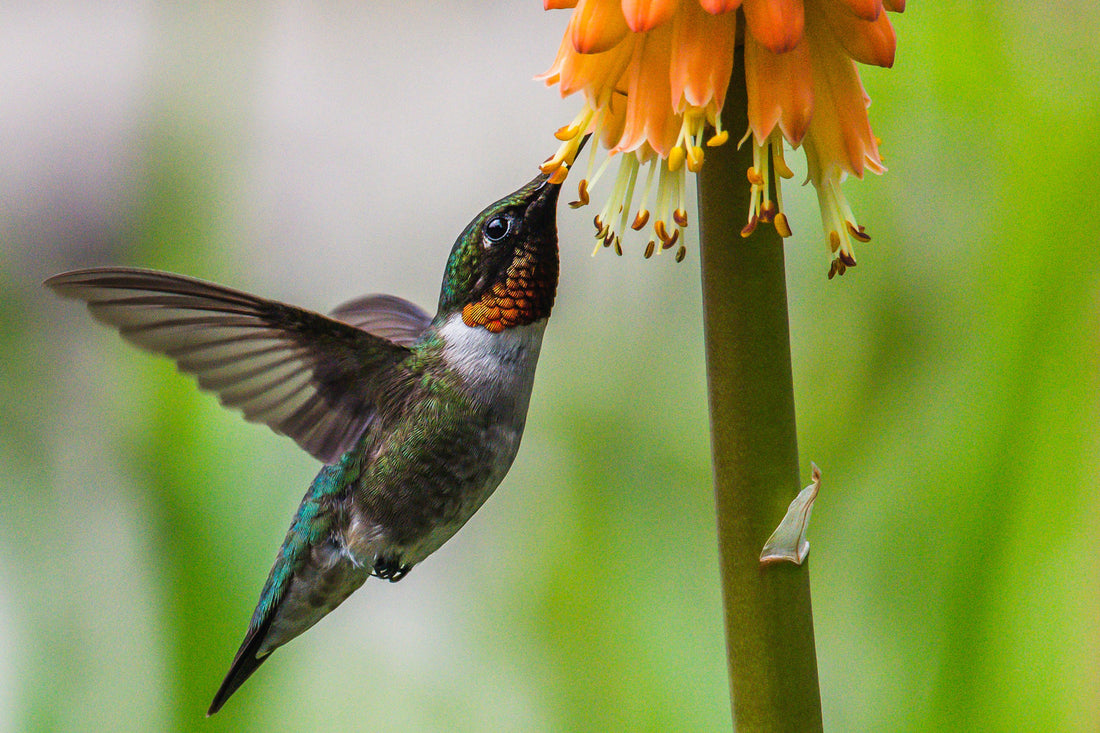
Garden Delights: Hummingbirds and Native Plants
Share
Hummingbirds are nature's delicate jewels, enchanting us with their vibrant colors and mesmerizing flight. By creating a garden that attracts these beautiful creatures, we can experience the joy of their presence and contribute to the preservation of local ecosystems. In this article, we will explore the delightful world of hummingbirds and discover how native plants play a crucial role in nurturing their habitat.
Why Native Plants are Important
Native plants are essential for supporting local ecosystems as they have co-evolved with native wildlife over centuries. These plants offer a multitude of benefits, particularly for hummingbirds. They provide a natural food source in the form of nectar-rich flowers and offer shelter for nesting and protection from predators. By incorporating native plants in our gardens, we can create a sustainable environment that promotes the well-being of hummingbirds and other native wildlife.
Understanding Hummingbirds
Hummingbirds are fascinating creatures known for their small size and rapid wing beats. These agile aviators can hover in mid-air and fly in all directions, making them a captivating sight in any garden. With their long, slender beaks and specialized tongues, they are uniquely adapted to feed on nectar from flowers. Hummingbirds also play a crucial role in pollination, transferring pollen from one flower to another as they feed.
Choosing the Right Native Plants
Selecting the right native plants is crucial for attracting hummingbirds to our gardens. Hummingbirds are attracted to flowers with tubular shapes and bright, vibrant colors, such as red, orange, and pink. Some popular native plant species that hummingbirds favor include Cardinal Flower (Lobelia cardinalis), Trump Flower (Zauschneria californica), and Bee Balm (Monarda spp.). It's important to choose a variety of native plants that bloom at different times throughout the year to provide a continuous food source for hummingbirds.
Creating a Hummingbird-Friendly Garden
Designing a garden that appeals to hummingbirds requires careful consideration of their needs. Start by selecting a sunny location that offers some protection from strong winds. Place tall plants or trellises along the edges of the garden to provide perching spots for hummingbirds. Incorporate a mix of native flowering plants with different heights and textures to create visual interest and diverse feeding opportunities.
To further entice hummingbirds, include a shallow birdbath or a water feature with a gentle trickle. Hummingbirds enjoy bathing and drinking from moving water, and it adds an inviting element to the garden. Additionally, provide some strategically placed feeders filled with a homemade nectar solution as a supplementary food source, especially during periods of low flower availability.
Maintaining a Hummingbird Garden
Caring for a hummingbird garden involves regular maintenance to ensure its vitality. Water the plants regularly, especially during dry spells, as hummingbirds rely on nectar-rich flowers for hydration. Prune the plants as needed to maintain their shape and encourage new growth. Remove any weeds or invasive plants that can compete with native species.
Pest control is also crucial in maintaining a healthy garden. Use organic methods to control pests and avoid harmful chemicals that can harm hummingbirds and other beneficial insects. Regularly monitor the garden for signs of pests and take appropriate measures to address any issues promptly.
Other Ways to Attract Hummingbirds
In addition to native plants, there are other ways to attract hummingbirds to your garden. Hanging hummingbird feeders with a nectar solution mimics the natural food sources and provides an extra incentive for hummingbirds to visit your garden. Ensure that the feeders are cleaned regularly to prevent the growth of mold or bacteria.
Misters and drippers can be installed in the garden to create a fine mist or gentle droplets of water, simulating rain showers. Hummingbirds are drawn to the sound and sight of water and will appreciate these additional water sources.
Enjoying the Beauty of Hummingbirds
Creating a comfortable viewing area in your garden allows you to witness the beauty and grace of hummingbirds up close. Set up a cozy bench or a couple of chairs near the flowering plants or the feeders. Use binoculars or a camera with a zoom lens to capture their intricate details and behaviors. Take the time to observe their feeding patterns, aerial acrobatics, and territorial displays.
Conclusion
By incorporating native plants and creating a hummingbird-friendly garden, you can invite these delightful creatures into your outdoor space. Not only will you have the pleasure of witnessing their enchanting presence, but you will also contribute to the preservation of local ecosystems. Remember to maintain your garden, provide a diverse food source, and enjoy the remarkable beauty of hummingbirds.
